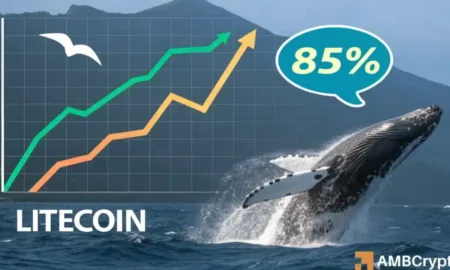Bitcoin’s 90-Day active supply is decreasing, indicating lower short-term trading activity and demand in the market. This decline could potentially lead to price consolidation or further dips in the near future. Understanding the implications of this shift in active supply is crucial for investors to navigate the market effectively.
The 90-Day active supply of Bitcoin is an important metric used to gauge market demand and sentiment by tracking the amount of Bitcoin that has been transacted within a 90-day period. A high active supply typically indicates increased market participation and rising demand, while a decline suggests reduced interest or a shift in sentiment. Historically, significant changes in active supply have been linked to fluctuations in price and market trends.
Factors contributing to the recent decrease in Bitcoin’s active supply include reduced short-term trading activity, driven by heightened market volatility and policy uncertainties. The decision by the SEC to drop its case against Coinbase has also created a more favorable regulatory environment, leading to a shift towards long-term holding over active trading. As institutional interest in Bitcoin grows, market participants are adopting a cautious approach, which could impact the active supply metric in the future.
Analyzing historical trends in Bitcoin’s active supply reveals that the metric tends to rise during bull market peaks and contract during consolidation periods or early-stage rallies. The current downturn in active supply mirrors patterns observed before major price surges, indicating that market participants are holding onto their assets in anticipation of higher prices. If this trend continues, Bitcoin may be in a consolidation phase before another upward move.
Despite the decline in active supply, Bitcoin’s price remains relatively stable, trading at $96,214 at the time of writing. The RSI indicates that BTC is in neutral territory, while the OBV shows weakening buying pressure. The market is currently consolidating below the $100,000 mark, with investors cautious and waiting for stronger catalysts. If demand picks up, Bitcoin could attempt another push towards $100,000, but a pullback to $90,000 is also possible if momentum is not regained.
In conclusion, the decrease in Bitcoin’s 90-Day active supply signals a shift in market behavior towards long-term holding and reduced short-term trading activity. Understanding the implications of this shift is essential for investors to make informed decisions in a volatile market environment. By analyzing historical trends and monitoring key indicators such as price, RSI, and OBV, investors can better navigate the current landscape and position themselves for potential price movements in the future.



![Binance Coin [BNB]: Important levels to monitor as market conditions change](https://cryptonewsinsiders.com/wp-content/uploads/2025/02/BNB-1-1000x600.webp-300x180.webp)






![Binance Coin [BNB]: Important levels to monitor as market conditions change](https://cryptonewsinsiders.com/wp-content/uploads/2025/02/BNB-1-1000x600.webp-450x270.webp)


![Maker [MKR] has increased by 60% this week, but here’s why you should consider selling](https://cryptonewsinsiders.com/wp-content/uploads/2025/02/Maker-Featured-1000x600.webp-450x270.webp)



